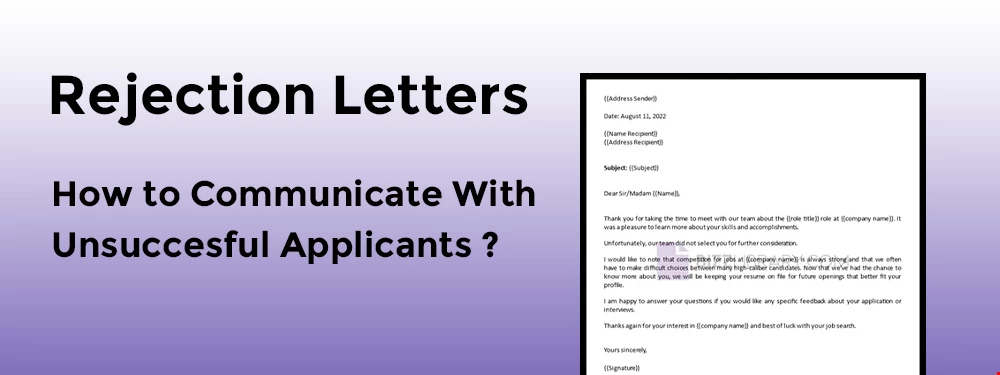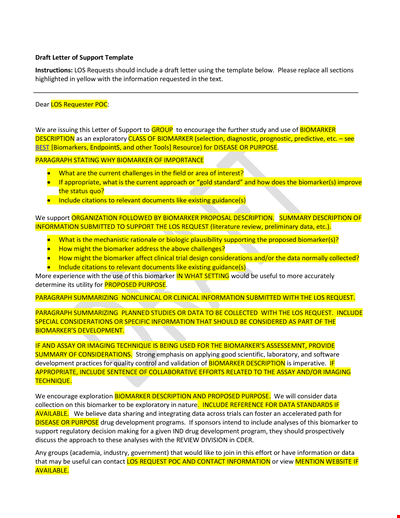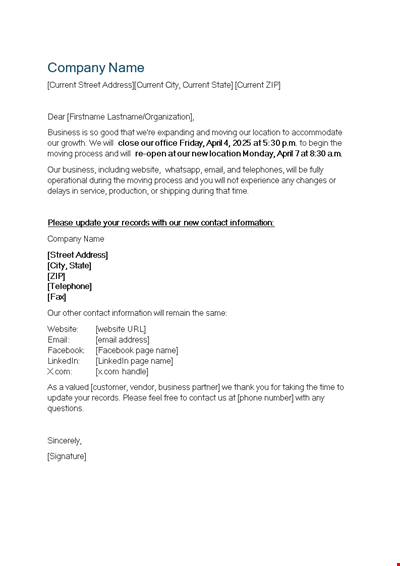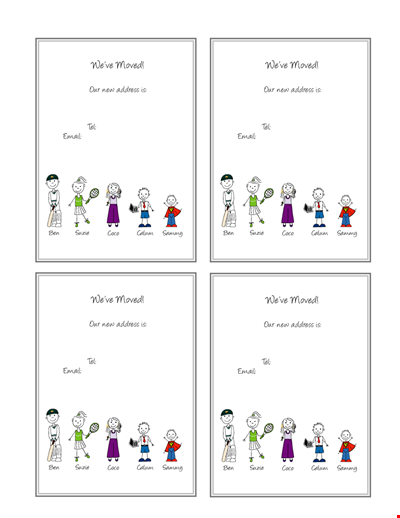Rejection Letters - How to Communicate with Unsuccessful Applicants?

Most people apply to jobs in the hopes of getting an offer, not realizing they might not get one at all. One of the most challenging and stressful parts of any job application process is dealing with rejection. Rejection is something that everyone in life has dealt with. And if you are a recruiting manager, writing a rejection letter is the fundamental skill you should have.
Rejection letters are all too common and can leave you wondering what you did wrong and if there is anything you can do to improve your chances next time around. Read on to learn more about rejection letters from employers and how you can avoid them in the future.
A rejection letter from an employer is a vital and often dreaded part of the job application process. This type of letter is a standard way for employers to let potential candidates know they will not be considered for the position. Though it is not a formal acknowledgment, it does reveal your reasons for not hiring the candidate. It can help you in future advertisements or promotions of your business on the internet.
A rejection letter usually contains the following basic details;
- Candidate Name
- Company Name
- Contact Information
- Job Title
- Reason for Rejection
- Date of Application
Types of Rejection Letters
Well, it is the duty of hiring managers to send rejection letters to let a person know they did not get selected for a position or are not the right fit for the company. A rejection letter can be a polite way of saying no—but it can also be rude and mean-spirited.
Here are some types of rejection letters:
A Form Rejection Letter
Hiring managers use this letter when an applicant applies for jobs through an agency or third-party service. It is short and simple and includes only basic information about your application.
It is a generic form of saying no, and it comes from the initial query of the applicant. Some examples of terms used in a form rejection letter are;
- Does not meet our needs!
- Unfortunately, we do not have room for such applications as of now.
Personal Rejection
A personal or sometimes also known as a polite rejection is a kind of disapproval letter which is longer as compared to form rejection letters. While a form letter simply is about replying negatively to the applicant, a personal rejection letter may include defined reasons for why you were not selected this time.
Now that you know what all types of rejection letters an employee receives. Let us deep-dive into the situations that may cause an employer to send an applicant rejection letter.
Reasons for Sending Rejection Letters
Among many reasons, here are a few most common scenarios an employer may encounter;
- Unqualified Candidate - The hiring officer refuses the candidates because they do not possess the required qualifications.
- Unsuitable Applicant - The applicant is not suitable for the particular job position but might be suitable for other open job roles or positions.
- Post-interview Rejections - In some situations, the applicant fails to show the right skills or has left an adverse impact during the interview. Thus, an employer sends a rejection email after an interview with the candidate. This kind of letter remains the most popular.
- Late Applications - There may be chances when an applicant sends in an application but gets late. In such situations, the employer may advise the candidate to send timely applications for future vacancies.
- Unrevealed Reasons - The applicant is rejected by the company, and it fails to highlight any reason for rejection.
- Internal Candidate Rejection - A candidate from your company or organization applied for a position outside of the company's boundaries, particularly for one that does not include current employees.
Best Practices for Rejecting Applicants
Sometimes, you need to say no even if the applicant seems like they would be perfect for the position. In such cases, if you handle rejections as professionally as possible. It can be beneficial to your company in the long run and leave both parties feeling good about how it went down.
Here are the best practices to help you reject applicants fairly and respectfully.
Tell them Quickly
While rejections are never easy, they do need to be done in order. Most importantly, the recruiter needs to send the rejection notification whenever he knows the person they are interviewing is not a good match for their team or company. Try not to dangle the candidate as he may end up giving a bad review about the company online leading to a bad reputation for the business organization.
Personalization
While employment rejection letter templates may make the work of a recruiter easy. But sending these generic emails to the applicants may make them feel they are just a part of the crowd and are not special to the company. And mentioning the employee's name at the beginning of the letter may make the applicant feel soft about the rejection and not rude.
Be Honest
You may think of writing a rejection letter that is somewhat sugar-coated and does not make the candidate feel bad. However, while being soft, you must keep in mind to offer an honest opinion to help the applicant move forward. Never say anything in a rejection letter that gives false hope to the applicant. For example, if you are sure that the candidate is not the best match for a particular job position, do not invite them for future openings.
Keep it Precise
Well, the fact is, no job-seeker would love reading long rejection letters. Therefore, it is vital to keep it as short as you can. Just two paragraphs are sufficient to tell them they are not selected this time. Thus it is advised to get straight to the point in rejection letters.
Conclusion
It is always disappointing to turn down someone for a job they wanted. But sometimes it is helpful to know why the employers did not choose them. It helps the candidates to apply for the next interview. Therefore, writing rejection letters while outlining the possible reasons for rejection, and what they can do to improve their application next time is essential. But it should be done while keeping the company's recruitment procedures in mind.
You May Also Like

Housewarming Invitation Template - Create Personalized Invites & Impress Your Guests

Include Biomarker Information in Letter of Support

Change of Office Address Letter

Executive Resume Template Cover Letter Us Letter

Gender Reveal Invitation Template - Beautiful Designs for Celebrating Your Little One's Arrival

Housewarming Invitation Template - Customize and Celebrate Your New Home

Police Commissioner Complaint Letter

PDF Formal Reference Letter